Curated By You: Caroline Akselson Of Selkie Patterns Makes A Linen Maxi Dress
Tell us a bit about yourself and what you do.
My name is Caroline, a Swedish Londoner, and I work in the creative industries in two different roles: I teach on the costume courses at Wimbledon College of Art and I am one half of the startup Selkie Patterns, an online business where we make sewing patterns and fabrics, sustainably produced here in the UK. I am also the co-author of the new book, The Great British Sewing Bee: Sustainable Style.
I am a costume maker by trade and worked freelance for many years on musicals such as Hamilton and Aladdin, operas and ballets, films such as The Favourite, the London Olympics opening ceremony, and I lived aboard a cruise ship in the Bahamas for a while doing costumes for Disney. At the moment I am getting used to my newest role, being a mum to a beautiful boy. I am hoping to be flexible so we can go to work together and make that our new normal.
Talk to us a little about the creation process- from idea to final product. How big is your team?
In my business, it’s just me and my co-founder. I am responsible for pattern cutting, our sustainability efforts and I do a lot of our organisation and business administration. My co-founder Alexandra is the designer, so the idea for a new pattern will mostly come from her and she designs all our fabrics. She will typically show me a garment sketch and we will talk about certain skills or features we want to incorporate, the kind of garment we want to release next and what time of the year we are thinking for a release date. Then we go into some technical features, for example how a garment will fasten, and then I go off and start pattern drafting and toiling the garment. Typically lots of things change during that stage, although we rarely make any major changes to the overall look of the garment. When I have finalised our pattern, it’s graded by a grading company and we write the instructions. It’s then tested by independent pattern testers before we release the product. We hire freelancers who do our illustrations and digital processes.
What do you love most about having your own business?
I love the variety of things I can do under the umbrella of my company. I don’t feel confined to one job role, or one goal; I feel free to explore options with what we can achieve as a startup. I also feel I can focus on the things I’m good at it, which is a wonderful feeling.
As a child, what was your first encounter and memory of beauty?
My parents went on honeymoon to Brazil when I was about 1.5 years old and they brought me back a doll dressed in a colourful and sparkly carnival outfit, with a big layered skirt and a beautiful headdress, dark skin and long dark hair. I don’t remember receiving this doll as I was so little, but it was probably the first doll I had and I think her clothing influenced me later on, becoming obsessed with dancing and costumes! I think I was fascinated by the doll’s aesthetic which was so different from the way I looked and equally so her clothes just mesmerised me. I vividly remember thinking about this doll as the most beautiful thing I had seen, and I think it also opened my eyes at a young age to different cultures and sparked my curiosity. And my love for bright colours has remained!
Can you talk us through a failure or a setback in your business that you learned from or an experience that helped improve your business.
We are still a very young business and we make high-quality products in small quantities with a fairly high price point (in comparison to competitors) that reflects this. The main setback we have experienced is with custom printed fabric that has had a fault in the printing, which is a situation that is difficult to manage as a small business: you want to offer your customer a new product or a refund, whilst at the same time dealing with an unexpected expense that potentially you can’t afford at that particular time. That’s definitely been the hardest for us to deal with, but the way we choose to deal with it is to be honest with the customer, communicate clearly and timely with them, and so far that has worked in our favour when we have experienced an issue like that. Customers appreciate an honest and realistic reply and they feel like they know who they are dealing with: it’s myself and my co- founder on the other side of the e-mail; not some customer service team who knows nothing about your order. Setbacks like that make you rethink how you sell your products and what to do to avoid a similar situation so it’s hard, but in hindsight always a massive learning curve. And somehow I also feel like you need those setbacks in the initial stages of business to force you to learn, grow and rethink all your expectations.
Name a book that you’ve recently read which inspired you and why?
Reading is one of my favourite things to do and I cannot imagine a life without books. When I was pregnant with my son I read a lot because I like to read in bed. I finally finished a massive book on the history of the Caribbean, which was inspiring to me because we have so much to unlearn in Europe about what we think our history and legacy is, and what we believe to be true after our history lessons in school. I always want to learn and try to actively read authors from different parts of the world and different genders. Although I have recently only read female writers: I find solace in women’s writing and a female perspective, and feel like I’m supporting women artists by reading their writing. The last book I read before my baby was born was “Girl, Woman, Other” by Bernardine Evaristo, which was a beautiful book told from different perspectives, through the eyes of women whose lives all intersect somehow. I am currently reading “Small Island” by Andrea Levy.
What was the first thing you ever remember making on your own? Tell us about this memory.
My grandmother taught me how to sew from the age of five and many holiday memories involve us sewing. She taught me on a small scale: we made many, many dolls’ clothes. Because I was sewing from such an early age, I cannot specifically remember the very first thing I made; sewing and making was just always there. In my early teens I made my first step into costume making and I tried to recreate headdresses and costumes from the film The Lord of The Rings. I also made my own and my sister’s dresses for school balls. At this stage I had never had any formal training and never seen a pattern in my life, so I just freestyled when it came to making clothes that weren’t for dolls. I remember making a dress for a school ball at age 15 and I just cut the whole thing on the stand, and inserted the zip by hand because I didn’t know how to do it on a sewing machine! Besides sewing I was also always just creating, like building little houses out of shoe boxes, watching my grandfather do bookbinding, trying knitting, learning calligraphy, making jewellery, turning in handwritten essays at school that I had ‘embellished’… I can barely remember a time in my childhood when I wasn’t making things.
Do you have a mentor or a muse?
We have business mentors in or startup, and I find it inspiring to talk to women who are ahead of me in similar or even very different fields. I myself mentor for The Girls’ Network so I try to inspire the next generation of women to help each other and unapologetically go after big goals. I have an immeasurable crush on the author Chimimanda Ngozi Adichie. I aspire to talk as calmly and powerfully as she does when she delivers lectures and talks. I find myself nodding along to points she makes about women and feminism in her public speeches, and her books are some of my absolute favourites. I also aspire to be as calm and positive as my own mother, especially now I’m a mother myself.
How important is social media to your business?
I think it’s become very important for small business to have a social media presence, which is something I actually almost resented when I first started. I would ideally like my professional life to be about my work, not about me personally. And I have managed to maintain that for the most part, but I have also come to realise that people connect to other people in a way they don’t always connect to a product or a service, and especially in small businesses they want to know who is behind the brand.
Do you have a community of crafters/ makers around you or do you find you are on your own?
My startup works in a very creative, beautifully messy studio complex in south London and moving in there made a big difference to our working lives. It’s great to go to work and be surrounded by other creatives. And when I’m not there, I teach at an art school, so I’m always surrounded by makers of all sorts. It’s actually unusual for me to be in a situation where I am surrounded by people who don’t have a
creative job.
What is the best and the hardest part about being your own boss?
The best part is that I can steer my efforts in a direction that I want to go in; not someone else’s ideas of what they want to achieve. I can focus mainly on what I’m good at, which is a great feeling. Spending the majority of my time doing what I’m actually good at is a very fulfilling feeling, and one I wish many more people could experience. I think a lot of us spend so much time on stuff we’re not meant to do, and we spend so little time on our actual strengths, when surely it should be the other way around. The hardest part of being my own boss is that all the responsibility is with me; there is no one else to pick up the slack, finish up a task, or face the customers if something goes wrong. When there is a deadline, there is no one else to do it.
What does sustainability mean to you?
Sustainability is a mindset as much as a design feature and a business model. The fact that we have to mention sustainability so often signals how much we’ve moved away from it in our daily lives. A plastic bag at the supermarket didn’t exist two generations ago, and now that’s what we’re used to and we have to actively wean ourselves off it to become more ‘sustainable’ in our efforts. The more we talk about it and work on it, the more normal it will become. In the end, a lot of things are about habits, so the more normal a sustainable habit can become, the better for all of us, especially the generations coming after us.
What does success mean to you?
This is a difficult question, but I think success is more a feeling than a tangible concept. Success to me means feeling free, feeling an alignment between what you’re good at it and what you spend the majority of your time on, feeling that the path that you’re on is the path that you’re supposed to be on, regardless of whether you know where that will lead you. I do also think financial freedom is success, because this can set you free in ways that hardly anything else can, which is something I’m still working on.
What have you chosen to make out of FS linen and why?
I have made a hack of one of my company’s dressmaking patterns, the Lin jumpsuit. It’s a gorgeous pattern but I realised I couldn’t wear it whilst breastfeeding, so I added a centre front opening. It fastens with poppers because those are easier to do one-handed, and has small vintage buttons. I didn’t buy anything new for this project. I attached a gathered skirt to the bodice because I spend a lot of time sitting down with my son. I think your clothes need to suit your life, otherwise you will never wear them. Equally, sometimes you want to wear something and escape into a character for a night. Dress up just because you can. I have very opposing taste in colours: I either like everything to be very simple and white, or I want all the colour and patterns. So you will often see me wearing a white T-shirt with a really bright cardigan or jacket, or a dress with a great print and no jewellery or make up. Rusty orange is one of my favourite colours and I’m so happy to finally have a me-made garment in this RED OCHRE colour. A peek at the lining reveals my taste for prints!





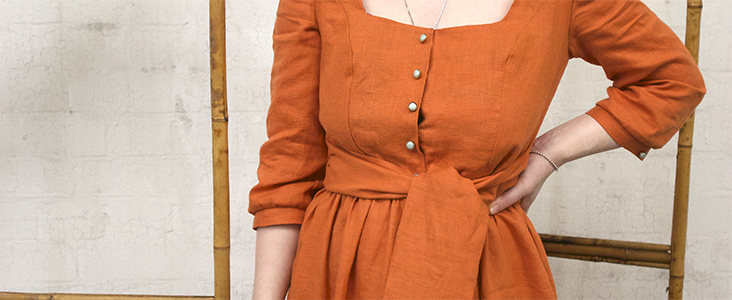
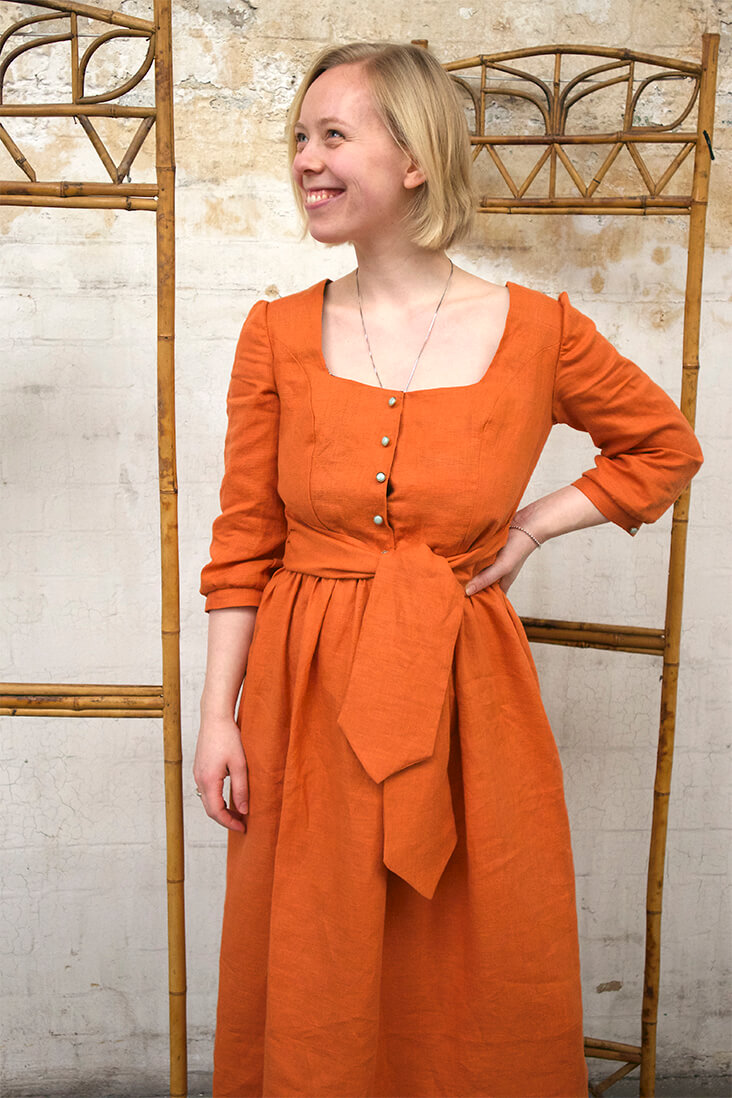
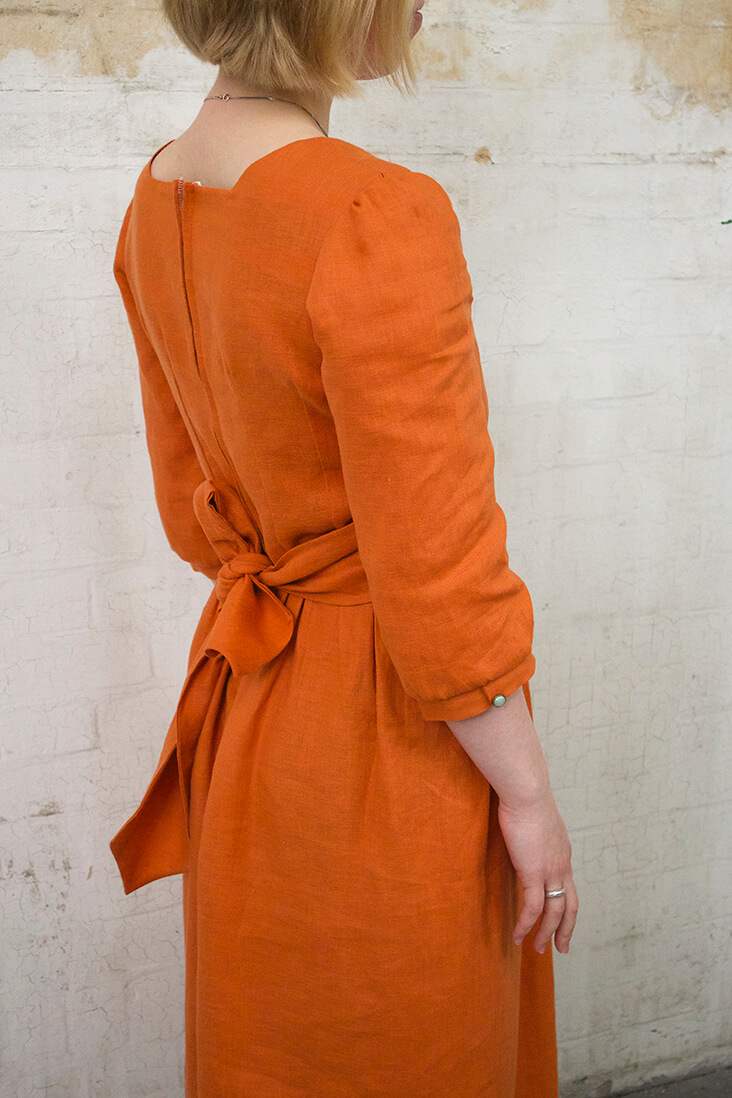
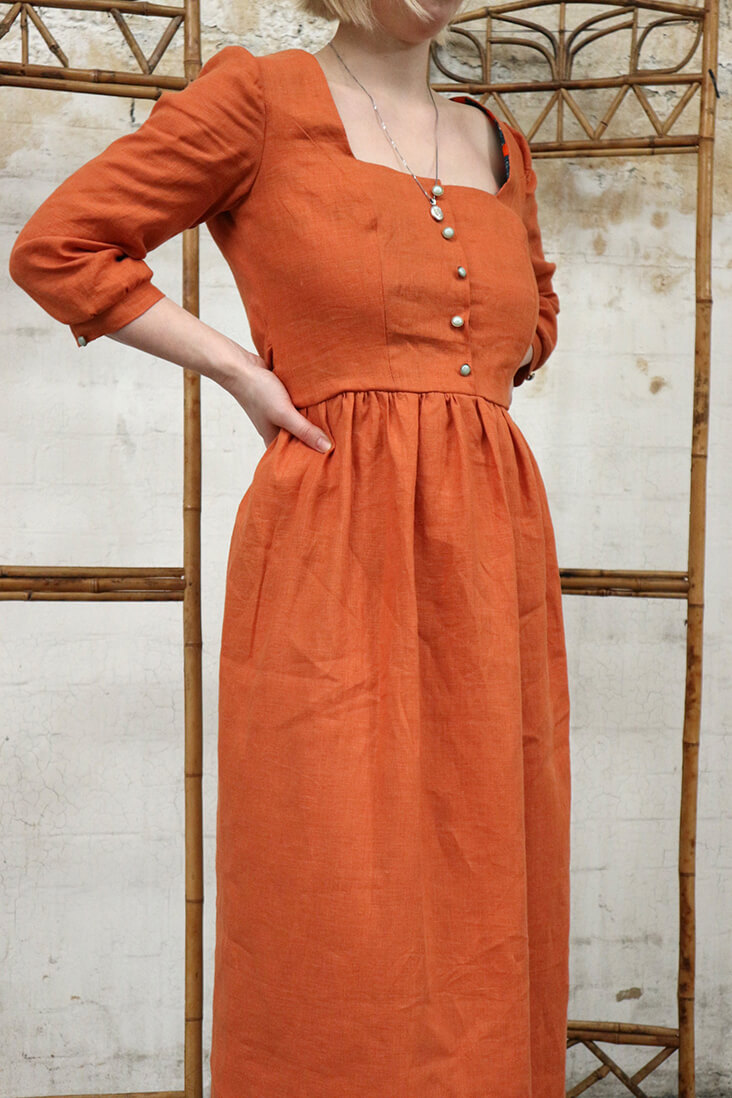
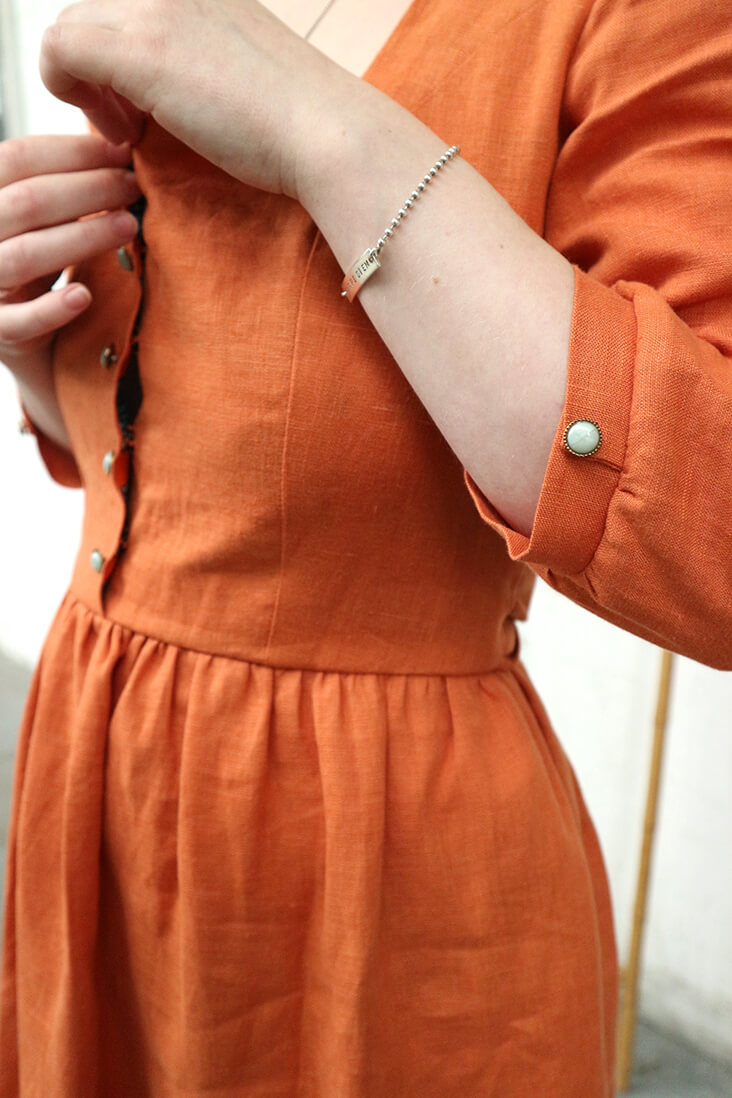
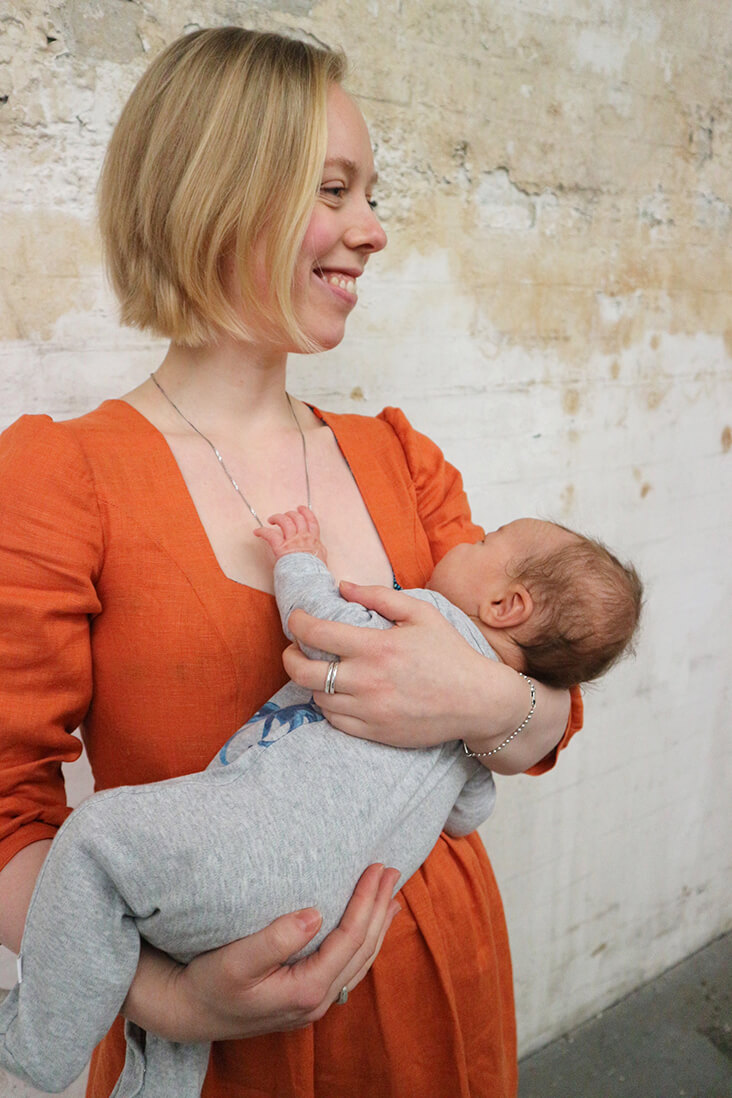
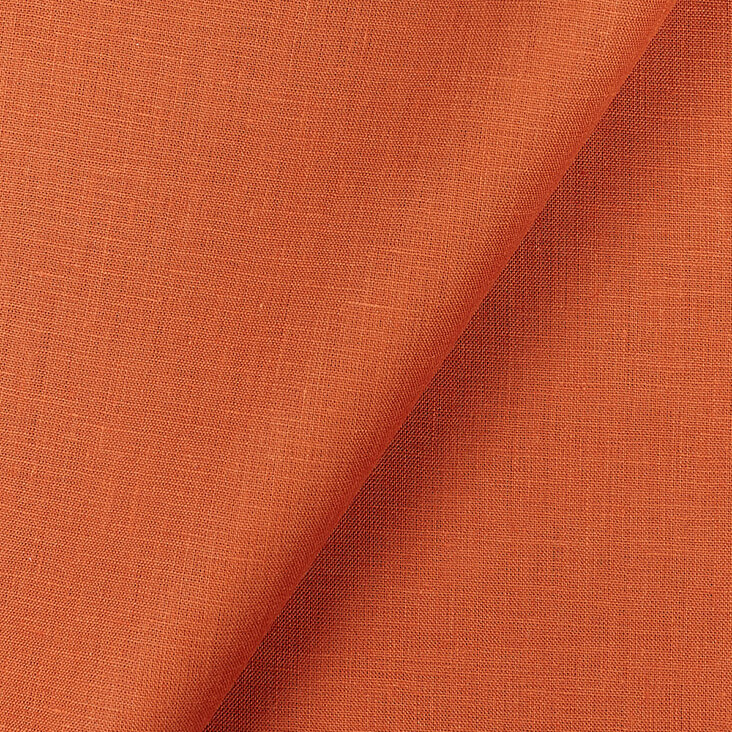

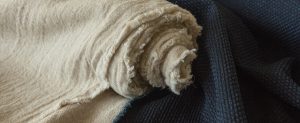
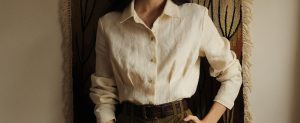
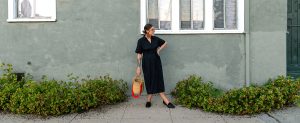
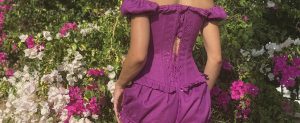












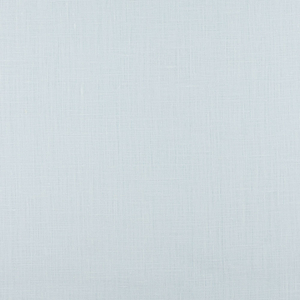
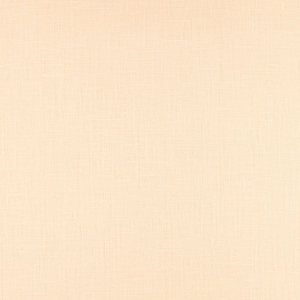

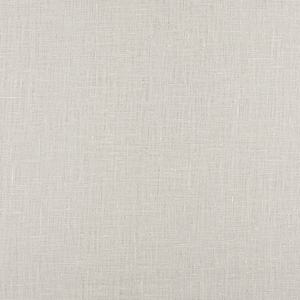
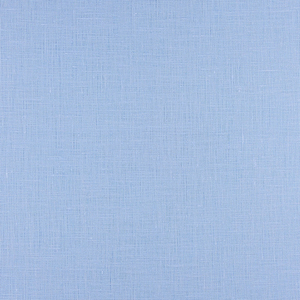
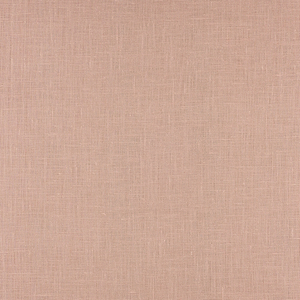
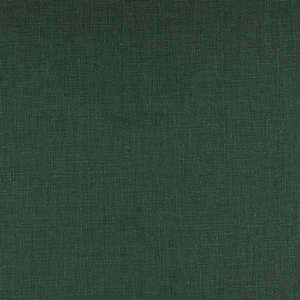
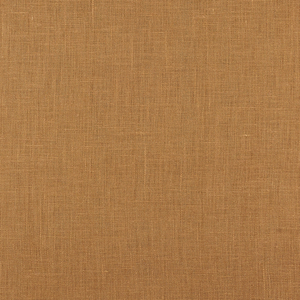



















2 Comments
Pingback:
Lin Pattern Hack – Selkie PatternsBethany Thompson
I’m fascinated with your sewing background ad is so mirrors mine. I started sewing about age six. My mama was my mentor and she didn’t teach me as much as modeled for me and I designed just by “eye”. At age almost 69, I am without her presence and it has been difficult to sew. I’ve found myself to be much more hesitant to test the skills I’ve acquired over the years and definitely have lost that fierceness for “making it up” as I go along. Guided by your inspiration, my plan is to start small today repairing a worn pair of overalls–my go to jeans–repairing the pocket and lining with flannel. Thank you!!